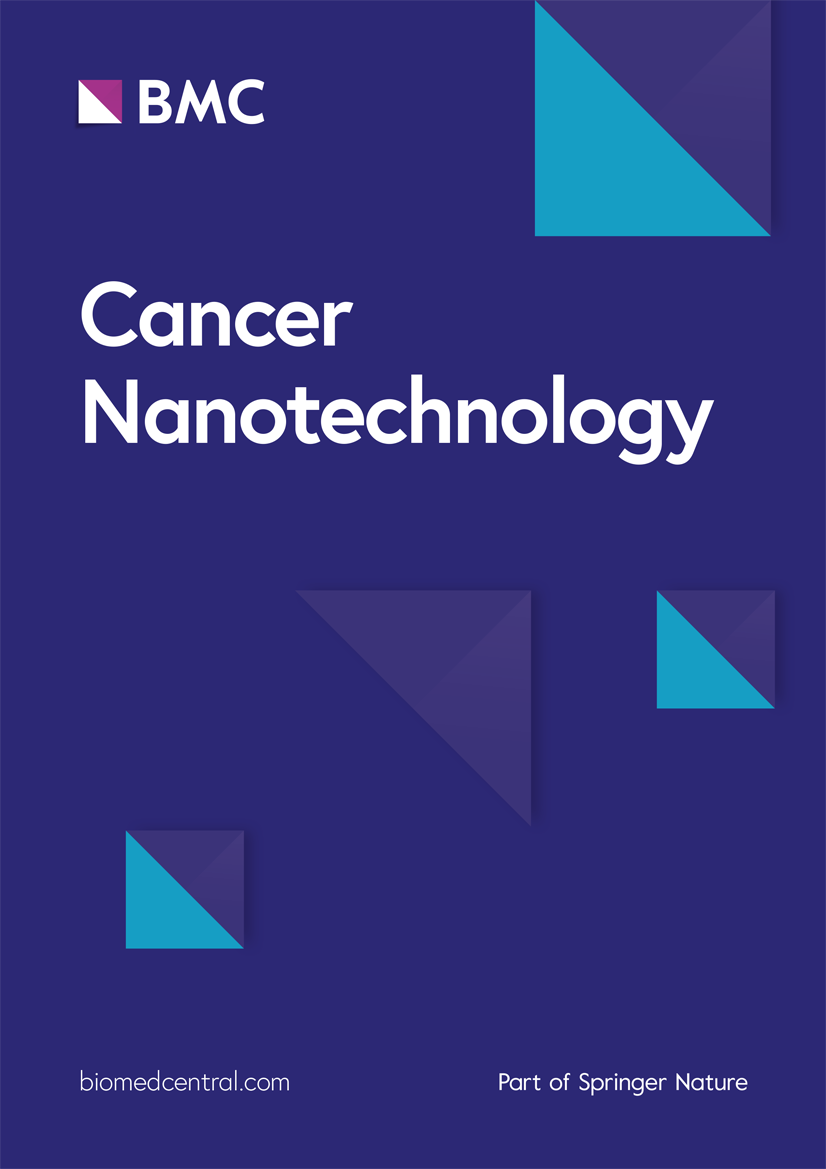Optimization and characterization of quercetin-loaded solid lipid nanoparticles for biomedical application in colorectal cancer
IF 4.8
2区 工程技术
Q2 NANOSCIENCE & NANOTECHNOLOGY
引用次数: 0
Abstract
Colorectal cancer (CRC) is a type of cancer that affects the colon or rectum and occurs in individuals over the age of 50, although it can affect people of all ages. Quercetin is a flavonoid, which is a type of plant pigment with antioxidant and anti-inflammatory properties. Some studies have explored the potential of quercetin as an adjuvant therapy to enhance the effectiveness of chemotherapy or radiation therapy. In the proposed work, the nano-biomaterials of solid lipids such as stearic acid (SA) and tripalmitin (TpN) as well as the surfactants tween 80 and span 80 were used to prepare novel quercetin (QuR)-loaded-solid lipid nanoparticles (QuR-SLNs) for medical applications in colorectal cancer (CRC). The resulting bio-nano SLNs’ mean entrapment efficiency (EE) and particle size (PS) were optimized by Box–Behnken design (BBD) approach based on the response-like surface methodology (RSM). The variables include lipid ratio (X1), surfactant ratio (X2), QuR-to-lipid ratio (X3), the sonication time (X4), and the homogenization time (X5). Requirements on the maximum EE (%) and minimum PS (nm) were optimized for the preparation of QuR-SLN. Differential scanning calorimetry (DSC), X-ray diffraction (XRD) analysis, and scanning electron microscopy (SEM) were then used to analyze the optimized SLN and to find the crystalline state of QuR with lipid relationship. In addition, on the Caco-2 cells, at IC50 (49 µM/mL), in vitro cytotoxicity was attained. The optimized QuR-SLN had practically spherical shapes, with % EE and a PS of 97.8 ± 1.16% and 132.16 ± 4.1 nm, respectively. In aqueous media, the degree of lipid crystallinity and the lipid modification was investigated, and the QuR incorporation and release patterns showed high correlations with both. The results showed that over 41.12 ± 1.6% of the bio-nano QuR-SLNs was released gradually over the course of 48 h, demonstrating effective QuR delayed release. Results on apoptotic observations indicate that apoptosis accounts for the majority of cell death, while necrosis, a type of cell death, constitutes a very minor portion. In conclusion, the prepared bio-nano QuR-SLNs might improve cytotoxicity and can act as an ideal carrier for the delivery of QuR and this preparation is used in the treatment of CRC.优化和表征槲皮素负载固体脂质纳米颗粒在结直肠癌中的生物医学应用
大肠癌(CRC)是一种影响结肠或直肠的癌症,好发于 50 岁以上的人群,但也可能影响所有年龄段的人。槲皮素是一种类黄酮,是一种具有抗氧化和抗炎特性的植物色素。一些研究探索了槲皮素作为辅助疗法的潜力,以提高化疗或放疗的效果。本研究利用硬脂酸(SA)和三棕榈酸(TpN)等固体脂质纳米生物材料以及表面活性剂吐温 80 和 span 80 制备了新型槲皮素(Quercetin,QuR)负载固体脂质纳米颗粒(QuR-SLNs),用于结直肠癌(CRC)的医疗应用。在类响应面方法(RSM)的基础上,采用盒-贝肯设计(BBD)法对制备的生物纳米 SLNs 的平均包埋效率(EE)和粒径(PS)进行了优化。变量包括脂质比 (X1)、表面活性剂比 (X2)、QuR 与脂质比 (X3)、超声时间 (X4) 和均质时间 (X5)。对制备 QuR-SLN 的最大 EE(%)和最小 PS(nm)的要求进行了优化。然后使用差示扫描量热法(DSC)、X 射线衍射(XRD)分析和扫描电子显微镜(SEM)分析优化后的 SLN,并找出 QuR 与脂质关系的结晶状态。此外,在 Caco-2 细胞上,体外细胞毒性的 IC50 值(49 µM/mL)已经达到。优化后的 QuR-SLN 几乎呈球形,EE% 和 PS 分别为 97.8 ± 1.16% 和 132.16 ± 4.1 nm。在水介质中,研究了脂质结晶度和脂质改性,QuR 的掺入和释放模式与这两项指标都有很高的相关性。结果表明,超过 41.12 ± 1.6% 的生物纳米 QuR-SLNs 在 48 小时内逐渐释放,证明了 QuR 的有效延迟释放。细胞凋亡观察结果表明,细胞凋亡占细胞死亡的绝大部分,而细胞坏死(细胞死亡的一种类型)只占很小一部分。总之,制备的生物纳米 QuR-SLNs 可提高细胞毒性,并可作为输送 QuR 的理想载体,该制剂可用于治疗 CRC。
本文章由计算机程序翻译,如有差异,请以英文原文为准。
求助全文
约1分钟内获得全文
求助全文
来源期刊

Cancer Nanotechnology
Pharmacology, Toxicology and Pharmaceutics-Pharmaceutical Science
CiteScore
5.20
自引率
1.80%
发文量
37
审稿时长
15 weeks
期刊介绍:
Aim:
Recognizing cancer as a group of diseases caused by nanostructural problems (i.e. with DNA) and also that there are unique benefits to approaches inherently involving nanoscale structures and processes to treat the disease, the journal Cancer Nanotechnology aims to disseminate cutting edge research; to promote emerging trends in the use of nanostructures and the induction of nanoscale processes for the prevention, diagnosis, treatment of cancer; and to cover related ancillary areas.
Scope:
Articles describing original research in the use of nanostructures and the induction of nanoscale processes for the prevention, diagnosis and treatment of cancer (open submission process). Review, editorial and tutorial articles picking up on subthemes of emerging importance where nanostructures and the induction of nanoscale processes are used for the prevention, diagnosis and treatment of cancer.
 求助内容:
求助内容: 应助结果提醒方式:
应助结果提醒方式:


